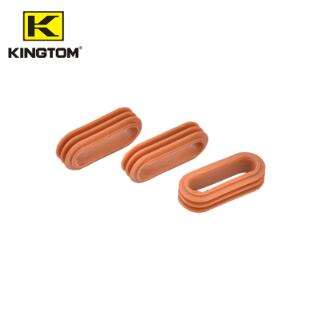The Material Matters: Understanding the Primary Materials Used in Manufacturing Rubber Sealing Rings for Automotive Connectors and Their Impact on Performance
2024-06-24
Rubber sealing rings are essential components in automotive connectors, ensuring reliable sealing and protection against various environmental factors. The materials used in manufacturing these sealing rings play a crucial role in their performance and durability. In this blog, we will explore the primary materials used in rubber sealing rings for automotive connectors and discuss how these materials impact the overall performance of the connectors.
The Role of Rubber Sealing Rings in Automotive Connectors
Before diving into the materials, it’s important to understand the function of rubber sealing rings in automotive connectors. These rings provide a tight seal around the connectors, preventing the ingress of moisture, dust, dirt, and other contaminants. They also help to maintain the integrity of the electrical connection by reducing the risk of corrosion and electrical faults.
Primary Materials Used in Rubber Sealing Rings
1. Ethylene Propylene Diene Monomer (EPDM) Rubber
2. Silicone Rubber
3. Fluorocarbon (Viton) Rubber
4. Nitrile Butadiene Rubber (NBR)
5. Neoprene (Polychloroprene) Rubber
1. Ethylene Propylene Diene Monomer (EPDM) Rubber
Properties:
- Excellent resistance to ozone, UV, and weathering.
- High resistance to water and steam.
- Good flexibility at low temperatures.
Impact on Performance:
EPDM rubber is widely used in automotive sealing rings due to its superior resistance to environmental factors such as ozone, UV rays, and extreme weather conditions. This makes it ideal for outdoor applications where exposure to the elements is a concern. Additionally, its ability to maintain flexibility at low temperatures ensures reliable sealing performance in various climates.
2. Silicone Rubber
Properties:
- High temperature resistance.
- Excellent flexibility and elasticity.
- Good resistance to ozone and UV radiation.
Impact on Performance:
Silicone rubber is known for its excellent performance at high temperatures, making it suitable for applications where the sealing rings are exposed to heat, such as engine compartments. Its flexibility and elasticity ensure a tight seal even after prolonged use, while its resistance to ozone and UV radiation makes it durable in outdoor environments.
3. Fluorocarbon (Viton) Rubber
Properties:
- Exceptional chemical resistance.
- High temperature resistance.
- Good mechanical properties.
Impact on Performance:
Fluorocarbon rubber, commonly known by the brand name Viton, is highly resistant to a wide range of chemicals, including fuels, oils, and solvents. This makes it ideal for automotive connectors exposed to harsh chemical environments. Its high temperature resistance further enhances its suitability for use in demanding automotive applications, ensuring reliable performance even under extreme conditions.
4. Nitrile Butadiene Rubber (NBR)
Properties:
- Excellent oil and fuel resistance.
- Good abrasion resistance.
- Moderate temperature range.
Impact on Performance:
NBR is commonly used in automotive sealing rings due to its excellent resistance to oils and fuels. This makes it a preferred choice for connectors in the engine and fuel systems. Its good abrasion resistance ensures durability and long service life, while its moderate temperature range makes it suitable for a variety of automotive applications.
5. Neoprene (Polychloroprene) Rubber
Properties:
- Good chemical stability.
- Moderate oil and fuel resistance.
- Excellent resistance to weathering and ozone.
Impact on Performance:
Neoprene rubber offers a balanced combination of properties, making it a versatile material for automotive sealing rings. Its good chemical stability and resistance to weathering and ozone make it suitable for both indoor and outdoor applications. While it may not have the extreme temperature resistance of silicone or Viton, its overall performance characteristics make it a reliable choice for many automotive connector applications.
Conclusion
The performance of rubber sealing rings in automotive connectors is heavily influenced by the materials used in their manufacture. EPDM, silicone, Viton, NBR, and neoprene each offer unique properties that cater to different environmental and operational requirements. By selecting the appropriate material, manufacturers can ensure that the sealing rings provide reliable protection and maintain the integrity of automotive connectors under various conditions.
Understanding the properties and performance impacts of these materials helps in making informed decisions for specific automotive applications, ensuring long-lasting and efficient sealing solutions. As automotive technology continues to evolve, the choice of materials for sealing rings will remain a critical factor in maintaining the performance and reliability of electrical connectors in vehicles.



